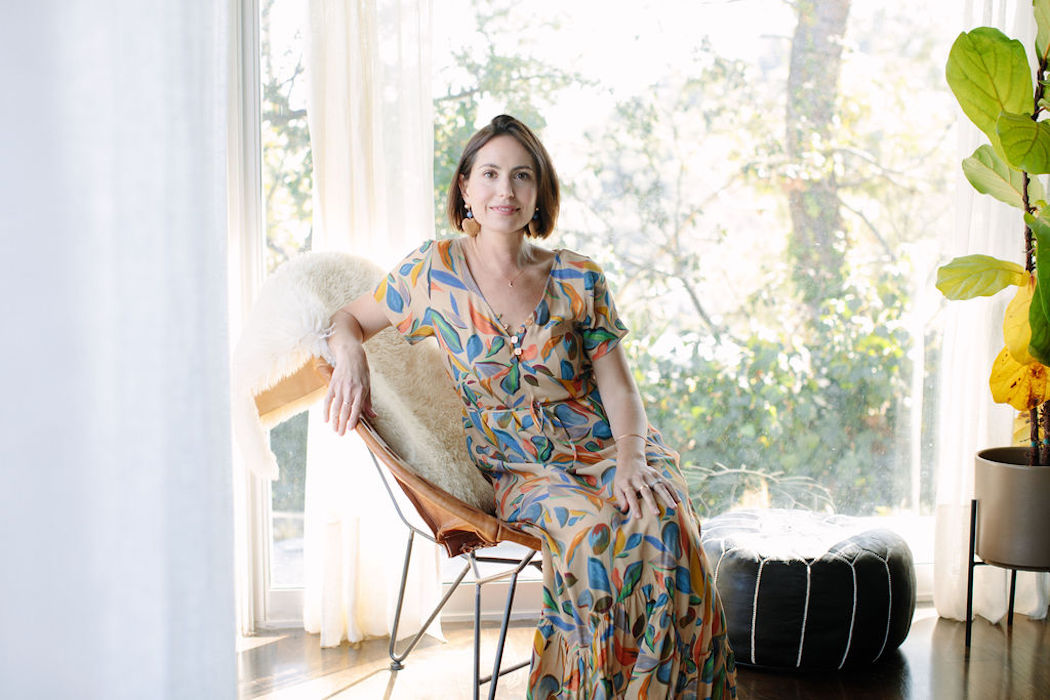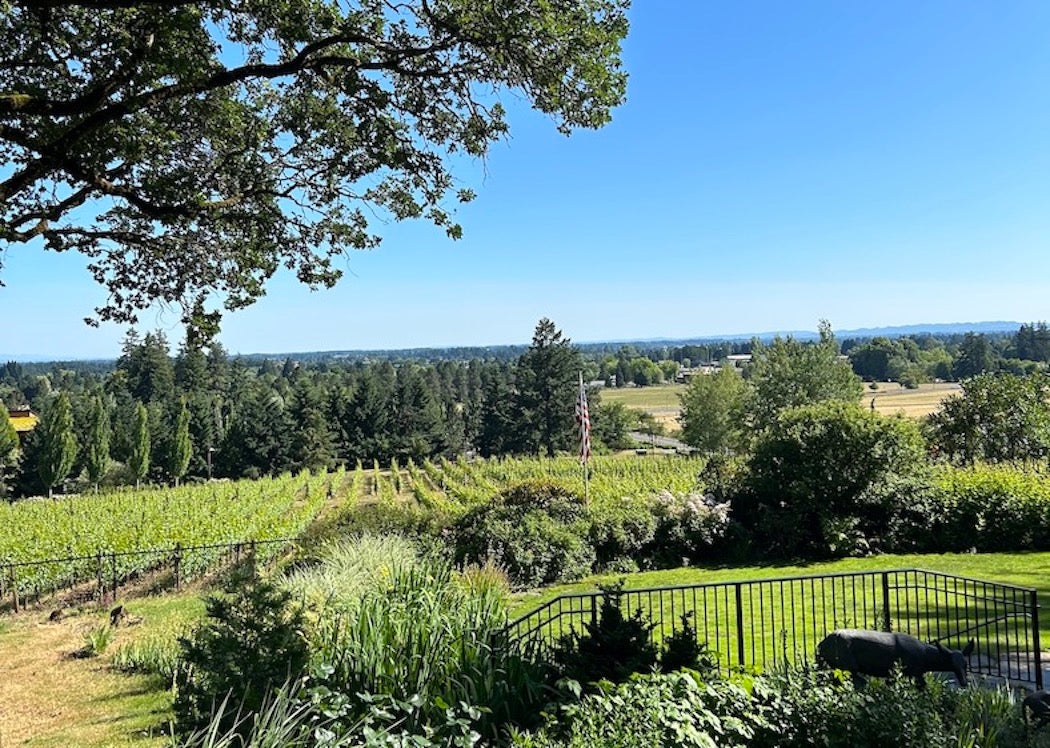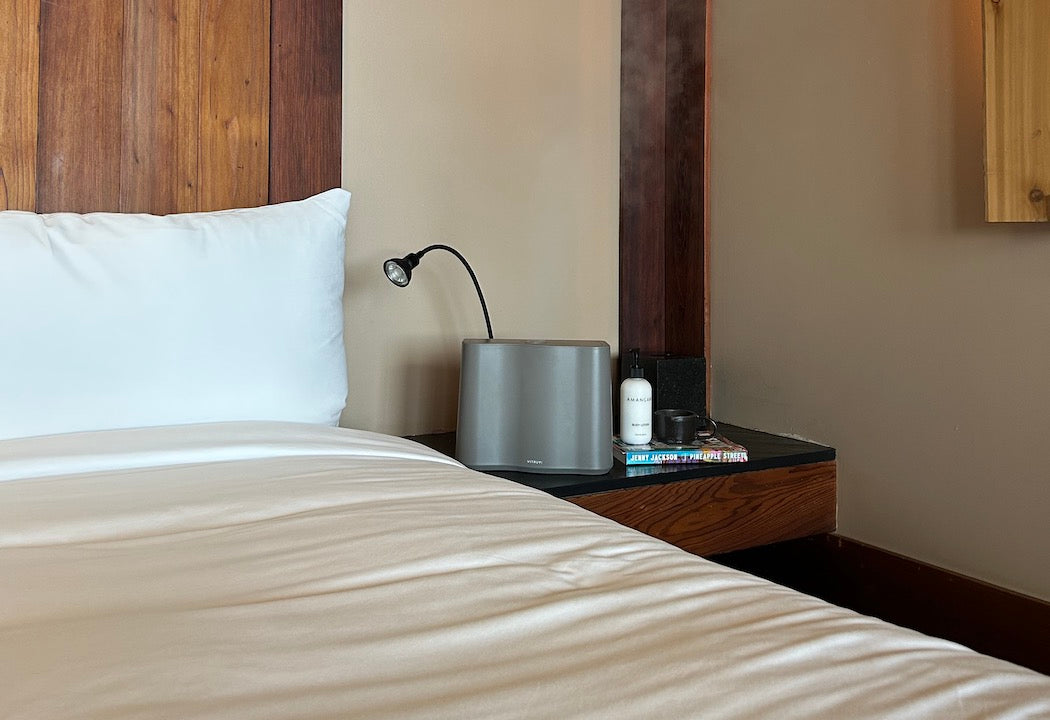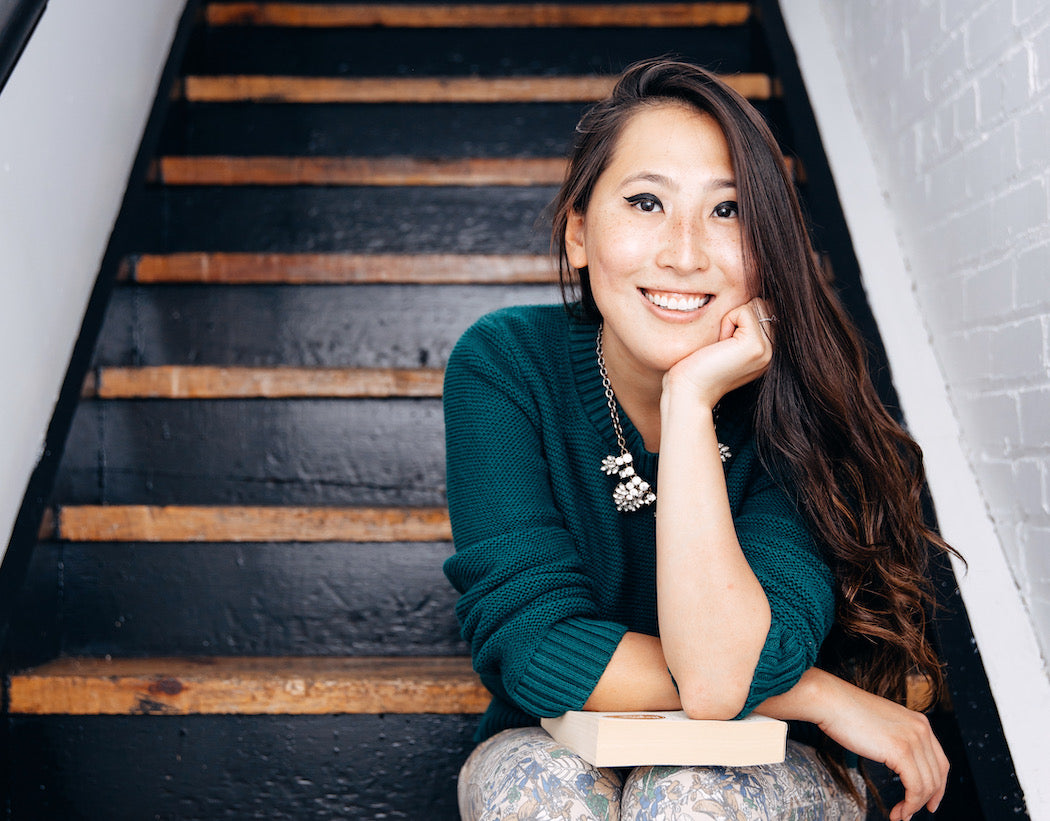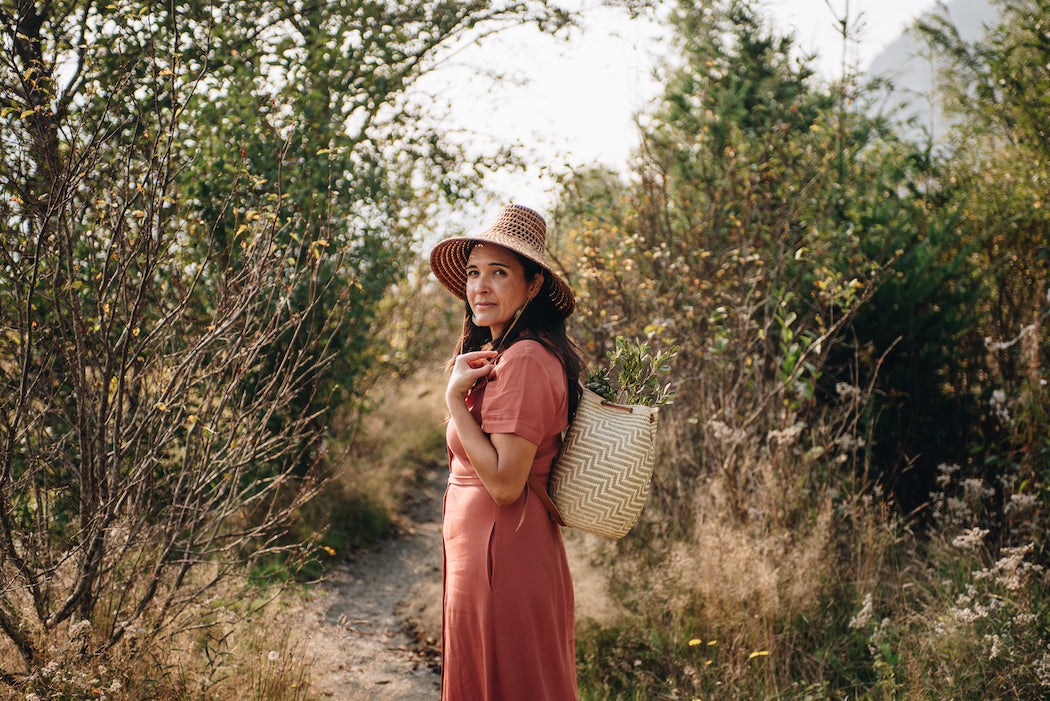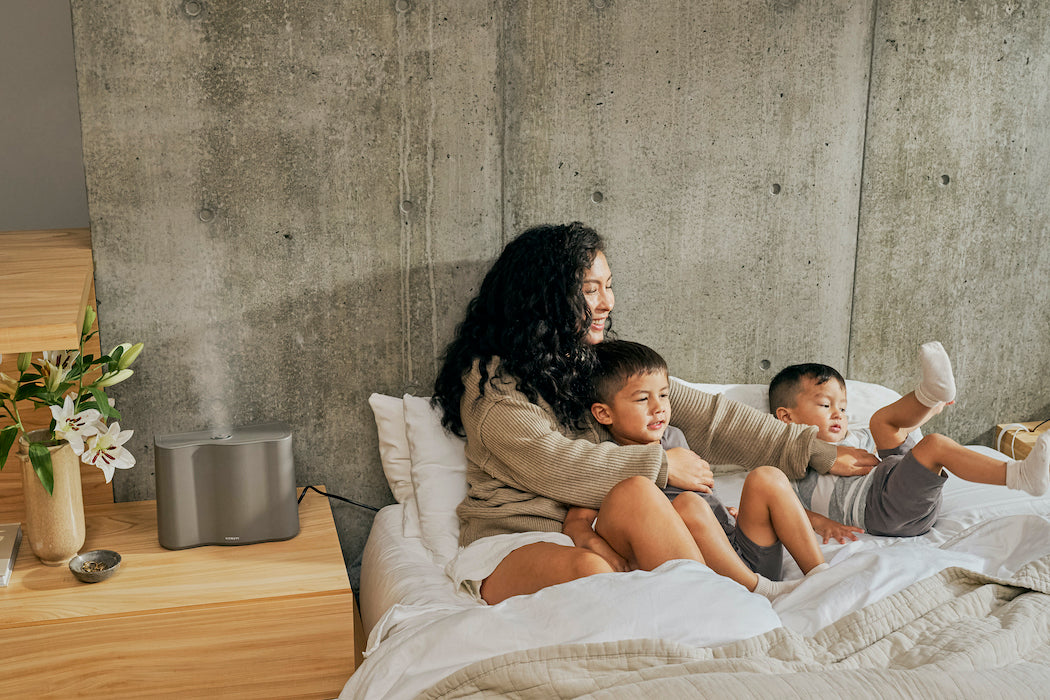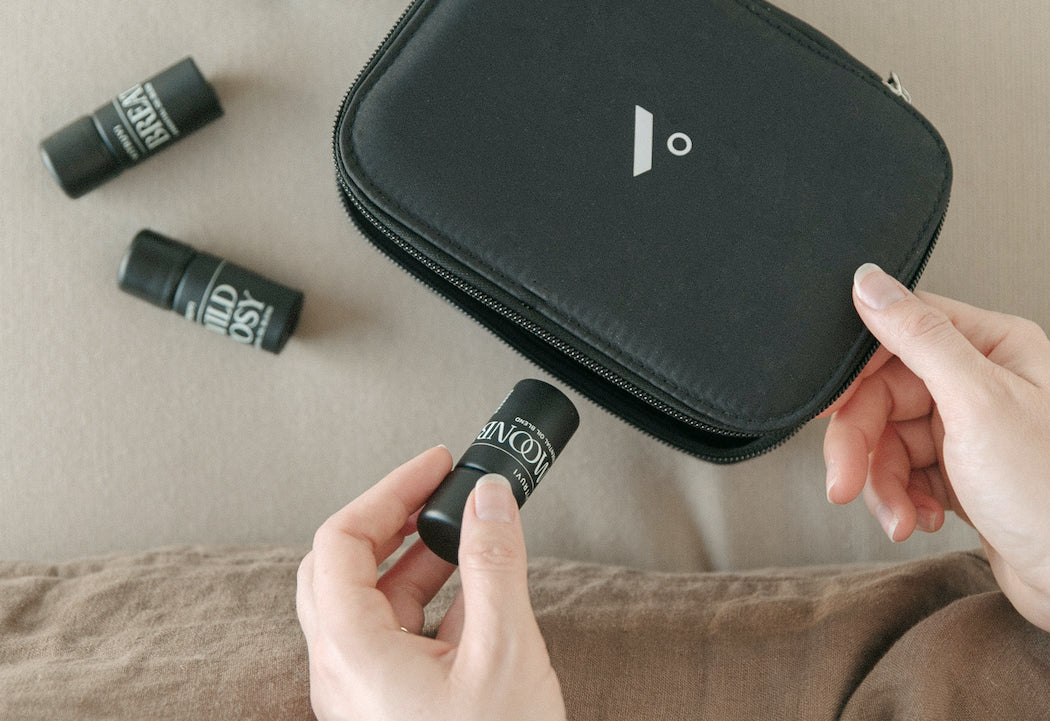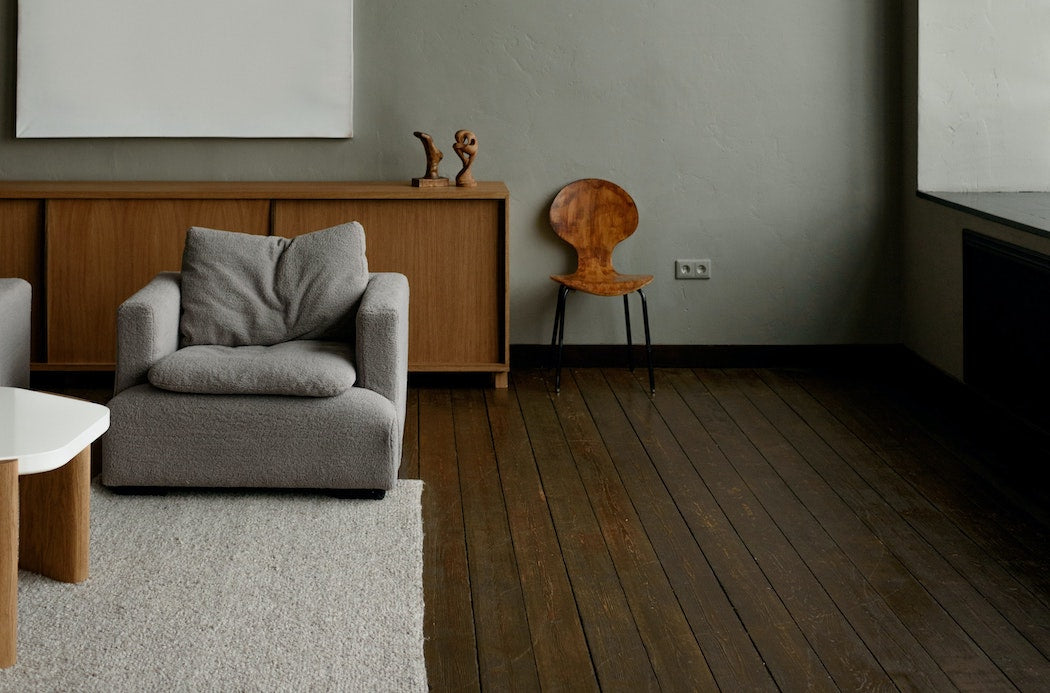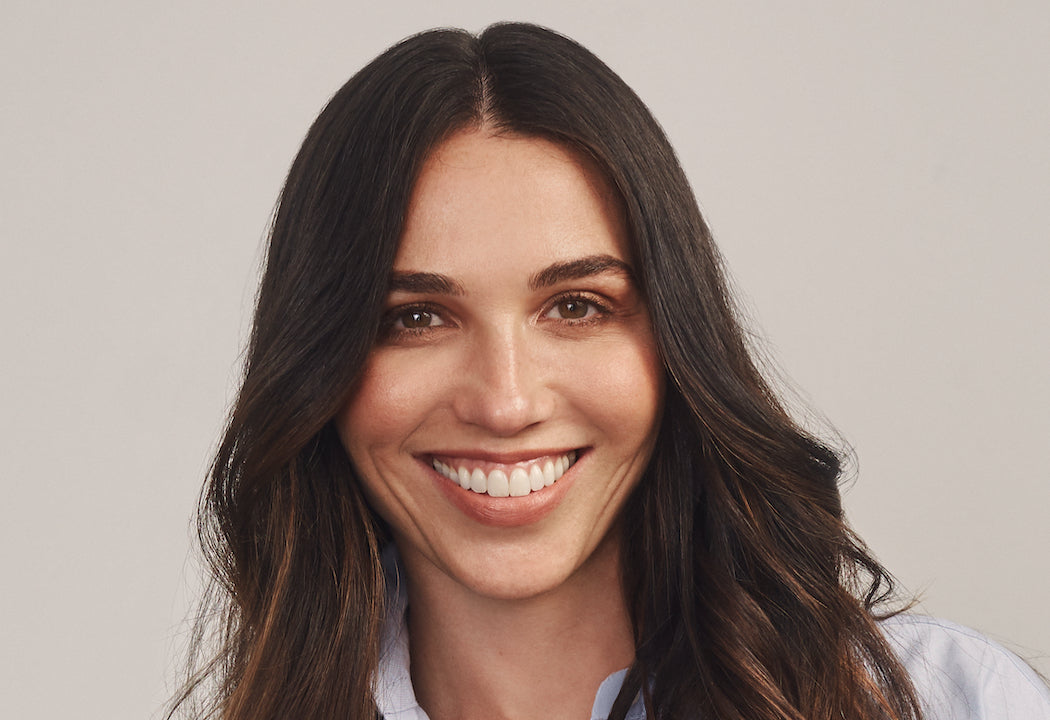Editor’s note: This interview and photo shoot were conducted many weeks ago—before the coronavirus pandemic forced North Americans to practise social distancing and self-isolation. We have chosen to move forward with publishing this piece because we believe that self-care is more important than ever, as is our desire to help our readers find inspiration and escape.
In many ways, Rachel Pally was ahead of her time.
For one thing, the namesake brand she founded in 2002—right out of college—was, and continues to be, produced in her hometown of Los Angeles instead of overseas. For another, she decided she needed to cater to more women and a few years later, launched a plus-size collection. She also makes maternity clothes, catering to yet another market of underserved women who want to feel beautiful as their bodies change.
Rachel Pally the brand is composed of soft fabrics, feminine patterns, pleasing neutrals, and flowing silhouettes. Her clothes are beautiful, but they’re also relaxed; it’s a sense of everyday luxury and ease that seems to run through her pieces. As Pally herself says, she designs for herself and her community—which explains why everything is so suited to her stunning home and her laid-back personality.
At her sun-filled house in the Hollywood Hills, Pally discusses those early trailblazing decisions, as well as how she first got into fashion and what she does to let her creativity run wild.
Your home is gorgeous and clearly means a lot to you. Can you talk about that?
I’m totally a homebody. I love hosting and having people come to me. But when [my husband] Kevin and I found this house, we completely fell in love. It has indoor space and outdoor space, it’s open, and there’s lots of natural light. We did come from a Spanish house which was also very special, but having this mid-century, big, open floor plan and being able to furnish it with both furniture from our old home and also treasures we’ve collected on our travels and art by family members and friends has been really wonderful. Everything is personal, and the furniture is meant to be lived on and sat on; we have kids who kind of run the roost here for the most part, so nothing is precious. It’s all very cozy.
What are some pieces of particular significance in here?
This piece [a large pink circle that hangs in the living room] my uncle Mark painted, which is really important to me. We’ve got lots of ceramics and knick knacks that I’ve made or my mom’s made or my husband’s made. It’s really just pieces from all over. I love things that are one of a kind. These pillows [on the living room furniture] I bought in Morocco. It’s nice to have a little bit from here and a little bit from there. We don’t really have anything in the house that doesn’t mean something to us.

So what drew you to a career in fashion? Did you always know you wanted to work with clothes?
I didn’t know that I wanted to be in fashion, but I knew that I wanted to work for myself and do something independent. I studied dance in college and fell in love with making costumes, and it was something I didn’t really expect. I grew up sewing with my grandma a little bit—she was an incredibly accomplished seamstress—but I’m kind of more of a “try it and fix it until it works” type of a project-doer, so being precise is not my strongest suit. So it was fun to be able to sew costumes which were stretchy and didn’t have to be perfect—they just had to convey an idea or a feeling. I definitely fell in love with that process when I was in college and then thought: “I’m going to try something, why not try this?”
How has the industry changed since you launched your brand right after finishing college?
It’s not even resembling the original industry. That was before social media; magazines were the way we all got our style information. There were no bloggers—it was a totally different time. But also there’s something very exciting about it being this democratization of fashion when everything is available online and anyone with an iPhone can become an influencer.
Making clothes in Los Angeles has always been part of your brand identity. Why is that?
There are people who do the job that are in this city, I’m from this city, this is the city where my business should contribute to the local economy. Of course it could be cheaper if I did it somewhere else, but that’s not me. This wasn’t a political decision that I made for business. This was just a human choice that this is my city and this is where my dollars should be filtering.
You also make plus-size clothing, which is something that a lot of brands don’t do.
It wasn’t, “I’ll get more fans if I do X, Y, and Z,” it was just, “There are a lot of women out there who should all have access to great clothing that makes them feel good.” I said to myself, “There’s a huge demographic of women who I’m not servicing—why am I not servicing them?” At the beginning when I started to introduce plus-size it was 2007, and I got a lot of pushback and it was really hard for me to find a retail partner. I ended up working with Nordstrom to launch my plus-size division, and it is an incredibly important part of my business; it’s not a large piece of my business, but it does contribute, and I feel like representation is actually incredibly important. I’ve been doing this for such a long time, it was just a choice that I made feeling like, I can’t say I make clothes for women when I don’t make clothes for all women. And I’d like to continue to expand that division as much as I can. And maternity as well—I feel like there are all these stages of life and all different ages and body types and personal styles and lifestyle choices. There are so many different ways that you can reach an audience that is like-minded.
For you, what is the power of a good outfit?
I feel like it can be a t-shirt and jeans—it doesn’t have to be like you’re putting together a whole look. I’m a mom of two, I work 40 minutes away; I do not have time to be finessing a perfect outfit every day, but there are certain pieces that when I put them on I feel confident, I feel beautiful. But also, I don’t feel confident and beautiful unless I’m in something that feels comfortable. I’m never going to wear Spanx ever again; I never want to feel like I have to squeeze into something to feel attractive. I do feel like now I really design for myself and for my community of women. I feel like fashion is also past the stilettos and Spanx part of life, but I didn’t want to do that anymore; so deciding to wear a dress that’s flowy that I can wear with a flat sandal or a cowboy boot—I feel so much more confident in that than putting on something that’s really precious.

As a mother and a business owner, how do you find time for yourself?
I find my solo time by setting my alarm extra early and mediating in the morning or journalling. When I don’t even have time for that, I will choose a podcast on my way to work that feels like it lifts me up, instead of just listening to music. I do make time to see girlfriends, and we make time to hike as a family on the weekends and try to do things that are active. But it’s really a puzzle piece that I feel like a lot of us struggle with.
Sometimes I’ll bring my gua sha stone into bed while we’re watching TV at night. We have a Peloton bike that we could stand to use a bit more often.
I’ve heard great things about Peloton.
I’ve heard great things, too. I’ll report back when it actually gets used.
How does scent play into your personal space?
Our home is a big open space, so scent really does travel through the house. Scent totally changes your space. It’s like music: if you put on something that’s calming and soothing, it totally changes your space.
You’ve been trying out vitruvi’s Ceremony and Retreat essential oil blends. What do you think?
They both smell so beautiful. And just to have a diffuser that doesn’t look like an appliance, that looks like a piece of decor. I would never put our old diffuser out on the table there and leave it. That’s why we used to tuck it in the kitchen—but I will leave this here [in the living room] because I think it looks pretty. And it smells so good.
You mentioned earlier that the house is filled with your ceramics. When did you start doing that?
I took a ceramics class all four years of high school. I’m 40 this year, so a long time ago—I had this incredible teacher, and then I didn’t touch any clay for 20 years. I just started two years ago back at a ceramics studio, so it had been 20 years since I had been on the potter’s wheel. It has been so wonderful and inspiring and satisfying. I feel like when you’re in a creative field professionally, it’s easy to lose sight of your basic creativity because everything has to be motivated on some level by whether it’s sellable, by whether it’s affordable—there’s definitely a financial aspect to creativity when it’s for work. And so to do something that is literally for no other reason than to make me happy and feel like it stokes that fire is pretty incredible. I feel very grateful that I can do that weekly and my husband supports it. There are knick knacks all over the house. I definitely felt like I was making too many indoor things, so we also have bells and hangings in the trees. It feels so good to make things that are just for art.
This interview has been edited and condensed.

